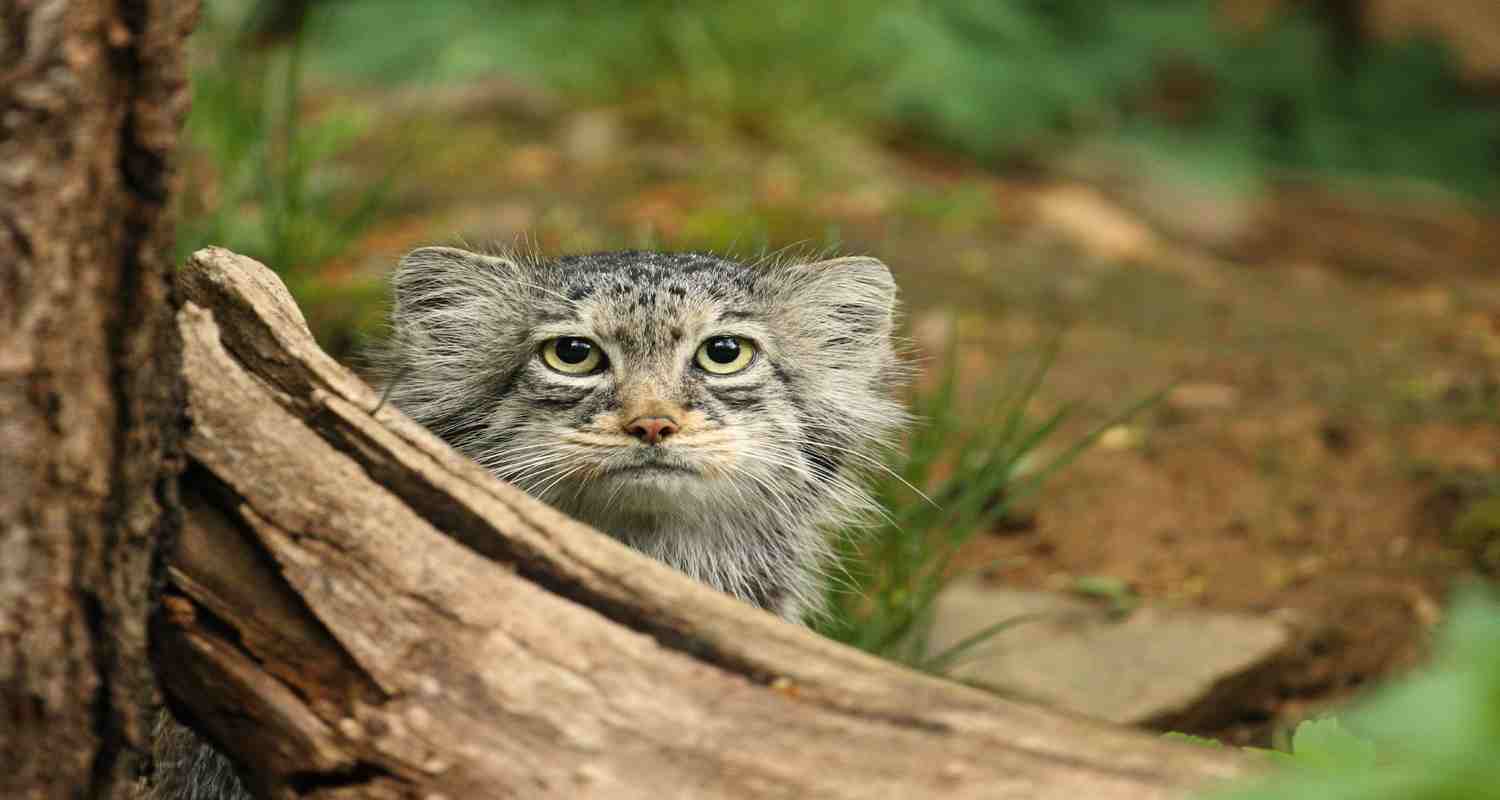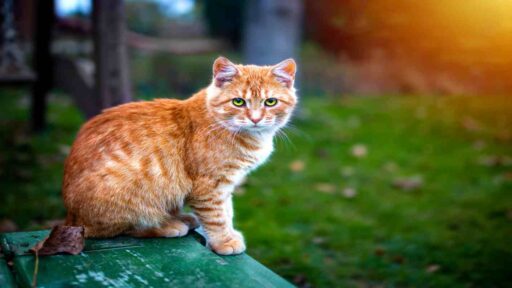Pallas Cat Standing on the Tail, Welcome to the enchanting world of the Pallas cat, where grace meets wilderness. Prepare to be mesmerized by the sight of this elusive feline standing tall on the tail, a testament to the beauty of nature’s design
Pallas cat Characteristics
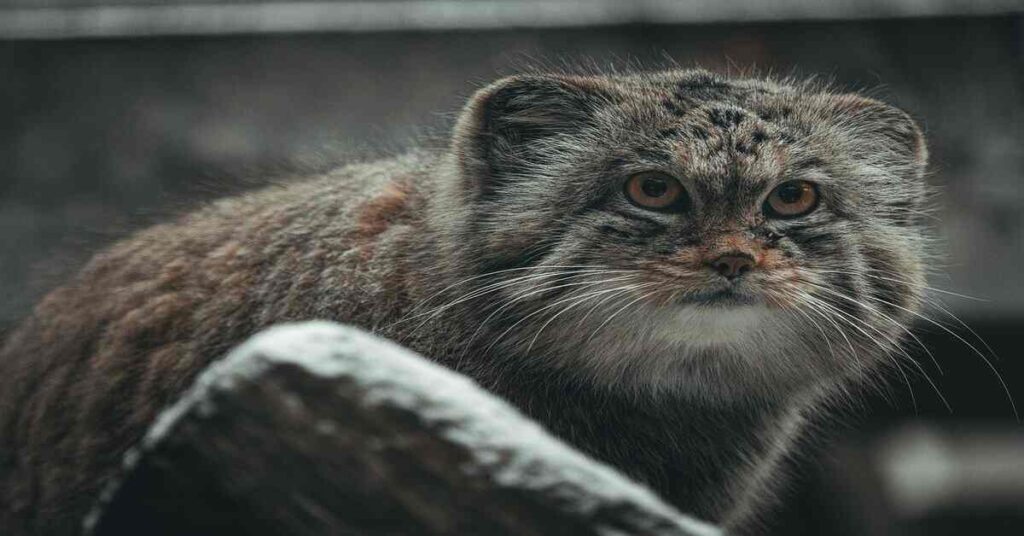
Physical characteristics
- Size: The Pallas cat is relatively small, with adults typically weighing between 3.5 to 7.5 kilograms (7.7 to 16.5 pounds). They measure about 46 to 65 centimeters in body length, with a short tail of approximately 21 to 31 centimeters.
- Appearance: Pallas cats have a strong, rounded body and short legs, ideal for rocky areas. Their fur is thick and soft, keeping them warm in the cold. It comes in shades of gray to light brown, often with spots. They have big yellow eyes, a broad head, and short, round ears, making them easy to recognize.
- Coat: The Pallas cat’s fur is exceptionally dense, consisting of a long outer layer of guard hairs and a soft, downy undercoat. This thick coat helps them endure the extreme temperatures of their high-altitude habitats, providing warmth during cold winters and insulation against the sun’s rays in summer.
- Adaptations: Their unique physical characteristics are well-suited to their environment. The Pallas cat’s stocky build and short limbs enable it to navigate rocky terrain with agility, while its thick fur provides camouflage and protection against predators. Their large, expressive eyes aid in hunting, allowing them to spot prey in low-light conditions.
- Behavior: Pallas cats are solitary and elusive animals, primarily active during dawn and dusk. They are skilled hunters, preying on small mammals such as pikas, voles, and birds. Their secretive nature and excellent camouflage make them challenging to observe in the wild, contributing to their mysterious allure.
Personality characteristics
While personality characteristics are typically associated with human behavior, we can discuss behavioral traits or tendencies observed in Pallas cats:
- Solitary Nature: Pallas cats are largely solitary creatures, preferring to live and hunt alone except during the breeding season. They establish and defend territories, marking them with scent to deter intruders.
- Elusive Behavior: they are known for their elusive nature, often avoiding human contact and remaining hidden in their rocky habitats. They are masters of camouflage, blending seamlessly into their surroundings to avoid detection.
- Stealthy Hunters: These cats are skilled hunters, relying on stealth and patience to catch their prey. They use their keen senses and powerful pouncing ability to capture small mammals and birds.
- Vigilance: Pallas cats exhibit a high level of vigilance, constantly scanning their surroundings for potential threats or prey. Their large, expressive eyes aid in detecting movement and assessing their environment.
- Territorial Defense: Pallas cats are territorial animals and will defend their territories against intruders, using vocalizations and scent marking to establish boundaries.
- Adaptability: Despite their specialized habitat preferences, Pallas cats demonstrate a degree of adaptability, are able to withstand harsh environmental conditions, and survive in diverse landscapes, including grasslands, steppes, and mountainous regions.
Pallas Cat Origins and History
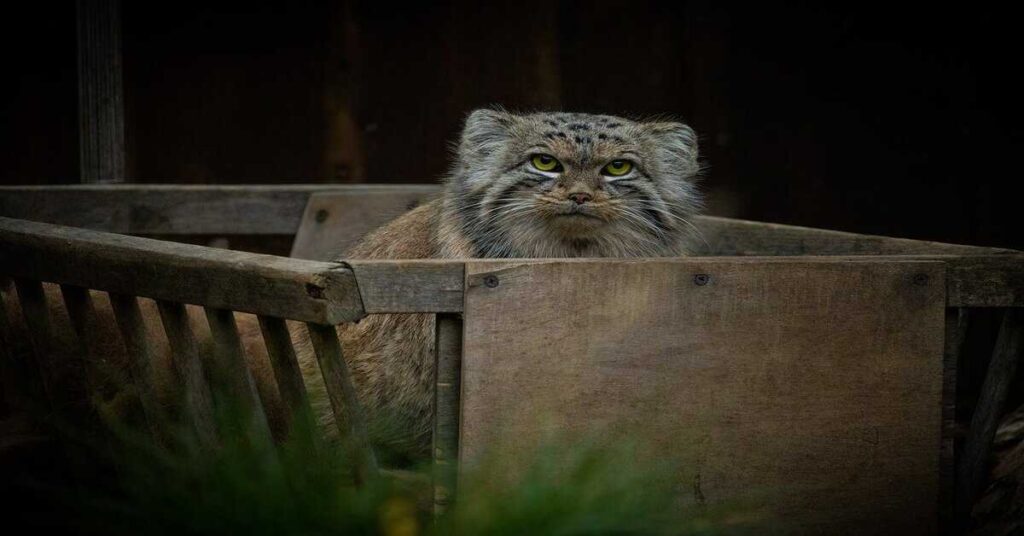
The Pallas cat, scientifically known as Otocolobus manul, has a fascinating evolutionary history rooted in the vast expanses of Central Asia. Here’s an overview of its origins and history:
- Evolutionary Origins: The Pallas cat belongs to the Felidae family, which includes all modern cat species. Its closest relatives are believed to be the genus Felis, which encompasses small wildcats like the domestic cat (Felis catus) and the sand cat (Felis margarita).
- Ancient Lineage: Fossil evidence suggests that the ancestors of the Pallas cat diverged from other felid species millions of years ago, evolving unique traits suited to their arid and mountainous habitats in Central Asia.
- Geographic Distribution: Pallas cats are native to a wide range of countries in Central Asia, including Mongolia, Russia, China, and parts of Iran and Afghanistan. They inhabit diverse ecosystems such as grasslands, steppes, and rocky mountain slopes.
- Cultural Significance: Pallas cats have long been revered in the cultures of their native regions. In Mongolia, they are known as “manul” and are considered symbols of wisdom and independence. However, they have also faced threats from habitat loss, hunting, and poaching.
- Scientific Discovery: The Pallas cat was first described scientifically in the early 19th century by the German naturalist Peter Simon Pallas, after whom the species is named. Pallas encountered the cat during his travels through Siberia and Central Asia and documented its unique characteristics.
- Conservation Status: Despite their cultural significance and ecological importance as predators in their ecosystems, Pallas cats face conservation challenges due to habitat degradation, human encroachment, and poaching. Efforts are underway to study and protect these elusive felines through research, habitat conservation, and public awareness initiatives.
Pallas cat care and diet
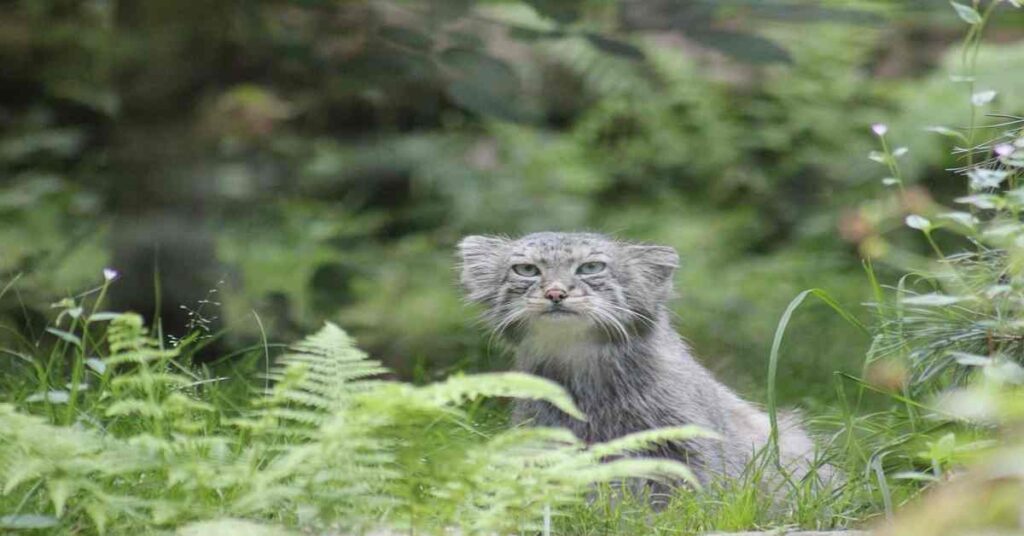
Here’s an overview of Pallas cat care and diet:
Diet
- Dietary Requirements: Pallas cats are obligate carnivores, meaning they rely solely on meat for nutrition. In the wild, their diet consists mainly of small mammals such as pikas, voles, rodents, and birds. In captivity, their diet should mimic their natural prey as closely as possible to ensure proper nutrition.
- Feeding Schedule: Pallas cats should be fed a diet of high-quality, commercially prepared raw meat or specialized carnivore diets formulated for small wildcats. They should be fed small, frequent meals throughout the day to simulate their natural feeding behavior.
- Environmental Enrichment: Providing environmental enrichment is essential for Pallas cats to maintain their physical and mental well-being. This can include providing opportunities for hunting and foraging behavior through puzzle feeders, hiding food, or providing objects to climb and explore.
Care
- Veterinary Care: Regular veterinary check-ups are crucial for monitoring the health and well-being of Pallas cats. Vaccinations, parasite control, dental care, and routine health screenings should be part of their veterinary care regimen.
- Enclosure Design: For captive Pallas cats, providing a spacious and secure enclosure that mimics their natural habitat is essential. Enclosures should include features such as rocky terrain, hiding spots, elevated platforms, and vegetation to allow for natural behaviors like climbing, hiding, and exploring.
- Behavioral Observation: Caretakers should closely monitor the behavior and health of Pallas cats to detect any signs of illness, injury, or stress. Changes in appetite, activity level, grooming behavior, or social interactions should be promptly addressed by qualified veterinary professionals.
- Species-Specific Knowledge: Caretakers should have a thorough understanding of Pallas cat behavior, physiology, and natural history to provide appropriate care and enrichment. Training in positive reinforcement techniques can also help facilitate cooperative behaviors for veterinary procedures and husbandry tasks.
Overall, providing proper care and nutrition is essential for ensuring the health and well-being of Pallas cats, whether in captivity or in their natural habitats.
Read more about cat’s health
Pallas Cat Standing on the Tail
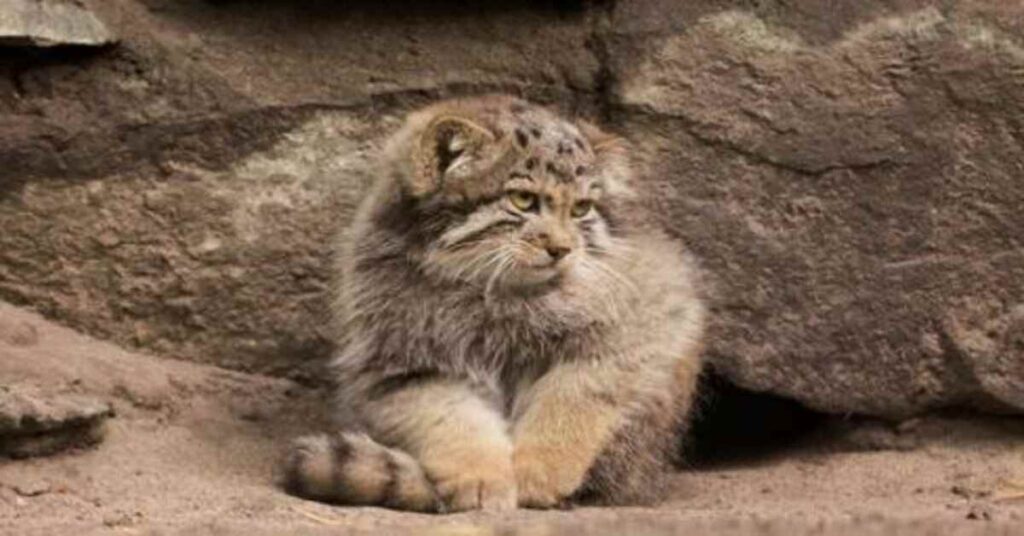
Pallas Cat Standing on the Tail is a phrase that describes a rare and captivating behavior exhibited by Pallas cats, also known as manuls. They are small wildcats native to the grasslands and montane steppes of Central Asia. They are known for their distinctive appearance, characterized by a stocky build, thick fur, and expressive facial features.
When a Pallas cat stands on its tail, it is a remarkable sight to behold. This behavior is often observed during moments of alertness or curiosity, as the cat surveys its surroundings or reacts to potential threats. Despite their small size, Pallas cats exhibit surprising agility and balance, allowing them to stand upright on their hind legs and tails with remarkable poise.
This behavior serves both practical and instinctual purposes for the Pallas cat. Standing on their tail allows them to gain a better vantage point, enhancing their ability to detect prey or predators in their environment. Additionally, it may serve as a form of communication or intimidation, particularly during territorial disputes or encounters with other animals.
Witnessing a Pallas cat standing on its tail provides a glimpse into the fascinating world of these elusive and enigmatic creatures. It highlights their adaptability, intelligence, and unique survival strategies honed through millennia of evolution in the rugged landscapes of Central Asia. This behavior exemplifies the resilience and resourcefulness of the Pallas cat, making it a symbol of the untamed beauty of the natural world
Pallas Cat Standing on the Tail FaQs
Why do Pallas cats stand on their tail?
Pallas cats, also known as manuls, may stand on their tail for several reasons:
- Heightened Awareness: Standing on their tail allows Pallas cats to elevate their bodies, providing them with a better view of their surroundings. This heightened perspective helps them detect potential threats such as predators or prey, enhancing their situational awareness.
- Communication: Pallas cats are solitary and territorial animals, and standing on their tail may serve as a visual signal to communicate with other cats or potential intruders. It could indicate assertiveness, dominance, or readiness to defend their territory.
- Balance and Stability: Despite their small size, Pallas cats are remarkably agile and balanced. Standing on their tail may help them maintain stability on uneven or rocky terrain, allowing them to navigate their environment more effectively.
- Thermoregulation: In cold climates where Pallas cats are often found, standing on their tail may help them conserve body heat by minimizing contact with the frozen ground. By lifting themselves slightly off the cold surface, they reduce heat loss through conduction.
- Curiosity and Exploration: Pallas cats are curious by nature, and standing on their tail may simply be a behavior associated with exploration and investigation. By raising themselves up, they can better inspect objects or scents in their environment.
How do Pallas cats stay warm?
Pallas cats stay warm in cold mountains:
- Thick fur traps heat.
- They’re active when warmer.
- They find shelter in rocks.
- Fat reserves help in cold.
- They sunbathe for warmth.
- Grooming fluffs their fur.
Why do cats stand on their tails?
Cats may stand on their tails for:
- Better view.
- Communication signal.
- Balance and stability.
- Keeping warm on the cold ground.
- Exploring their surroundings.
How does a cat’s tail keep them warm?
A cat’s tail helps keep them warm by:
- Fluffing up for insulation.
- Wrapping around their body.
- Reducing heat loss from their core.
- Covering their sensitive extremities.
- Providing additional warmth during cold weather.

